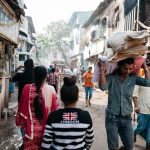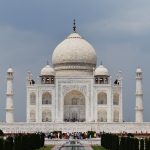Your average Mumbaikar might wonder why Dharavi, one of Asia’s largest slums, has survived, slap bang in the middle of India’s burgeoning financial capital, for so long. As the city has grown and expanded, Dharavi has come to occupy a prime piece of real estate. Why not bulldoze it down and start again?
What people across Mumbai might not know is the way that the slum is influencing their lives; how the million people and over ten thousand businesses Dharavi is home to are a vital part of the Maximum City, rather than a blight upon it.
1. Supplying Celebrations for a Century

Whether it’s diyas at Diwali, Ganesha’s at Ganapati or khir pots for Eid sweeties, the products made in Dharavi’s pottery area, Kumbharwada, are an integral part of many of Mumbai’s religious festivals.
2. The Height of Fashion

Dharavi’s leather industry is the second largest in India. Be it the designer handbag or the sporty leather jacket you saw in the mall yesterday, it probably came from Dharavi.
3. SWACHH BHARAT Starts Here

Dharavi was keeping the streets clean long before Indian Government’s ‘Clean India Mission’. Over 80% of the city’s plastic waste, amassed by rag pickers, finds its way here where it is sorted, washed, dried, dyed and turned into plastic pellets, ready to be reused.
4. Papad Production

Aah! Those delicious papads Mumbaikars crunch on in meals across the city. They all come from Dharavi too! There’s an association of Dharavi women who roll out between 4 and 5kg of this Indian staple each day between 9am and 4pm each day.
5. It’s Inspiring People From All Over The World

Tens of thousands of people from all over the world are visiting Dharavi and getting inspired! Through our own Educational Slum Tour we’ve welcomed TED speakers, Google employees and Harvard students. We’ve hosted all kinds of people from all over the world including princes and International sports stars!
6. Six Hundred and Sixty Five Million More Reasons

Those 10,000 businesses we mentioned – they account for annual production of approximately $665,000,000 worth of goods (that’s right, six hundred and sixty five MILLION dollars) annually.
7. Like A Cookie With Your Chai?
Each day Dharavi produces tonnes of food. The Khari (a type of cookie) is made right here in Dharavi and sold to restaurants, stalls and hotels all across the city.

Next time, you bite into one of these khari biscuits with a cup of chai on a wonderful monsoon evening, don’t forget, it wouldn’t be there without Dharavi.
8. It’s An Example to Us All
The Dharavi population is made up of over 80 different communities, speaks more than 30 languages and practice over 6 religions in the 27 temples, 11 mosques, 6 churches.
It’s an example of how in spite of these differences, communities can live together harmoniously – like last year when on Friday Muslims made space for Ganapati processions, who in turn proceeded in silence until the Muslim Namaaz had concluded.

About the co-author: this was written with the help of Indranil Sarkar, a journalism student, a storyteller, a photographer and one of Campus Dairies ’25 under 25′. You can see more of his work on Instagram at @theruralindiaproject_official.




